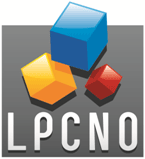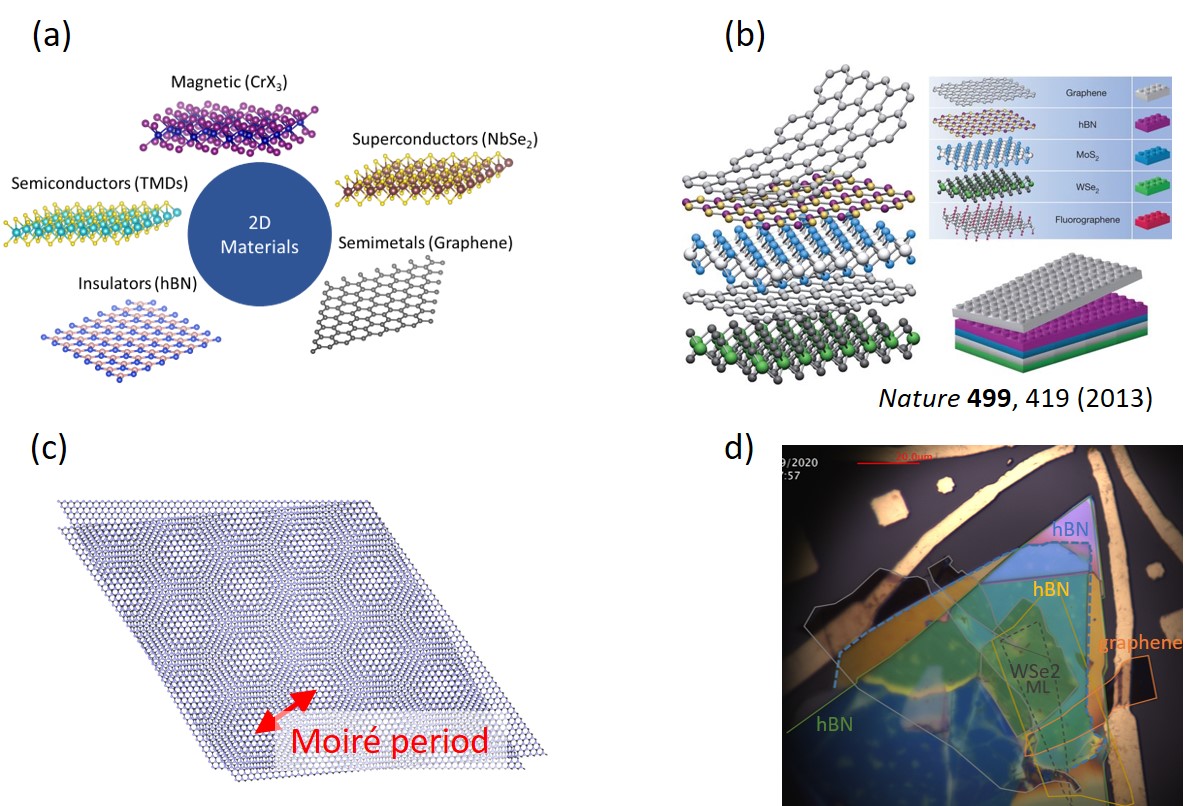Fabrication and properties of van der Waals heterostructures
NANOSCIENCE

Lab: LPCNO
Duration: NanoX master Internship (8 months part-time in-lab immersion)
Latest starting date: 03/10/2022
Localisation: LPCNO (Quantum Optoelectronics Group), ExfoLab
Supervisors:
Cedric ROBERT cerobert@insa-toulouse.fr
Xavier MARIE marie@insa-toulouse.fr
This research master's degree project could be followed by a PhD
Work package:
2D materials have attracted a strong interest for the past decade for their unique properties when they are thinned down to one monolayer (i.e. atomically thin layer). Graphene (one atom-thick sheet of carbon) was the first 2D material to be studied for its exceptionnal electronic transport and thermal properties. The family of 2D materials is now extending far beyond graphene with a wide range of new 2D semiconductors, insulators, topological materials, superconductors and even magnetic materials (Fig (a)).
Besides their intrinsic fascinating properties, 2D materials present a superior advantage as compared to standard epitaxial materials : the possibility to stack them to form van der Waals heterostructures (Fig (b)) [1]. Because the stacking is not constrained by the lattice matching condition like for epitaxial materials, the number of stack combination is almost infinite. In addition, 2D materials stacks offer the possibility to control another completely new degree of freedom : the twist angle between layers. This control has been recently at the origin of many intriguing physics phenomena, such as moiré effects (Fig (c)), superconductivity or ferroelectricity [2,3].
The Quantum Optoelectronics Group at LPCNO is a recognized world expert in the fabrication of van der Waals heterostructures [4] and their study by advanced optical spectroscopy experiments (low temperature microphotoluminescence under magnetic field, time-resolved photoluminescence …). In particular we are interested in the optical and spin properties of 2D semiconductors like transition metal dichalcogenide (TMD), magnetic properties of new 2D materials and quantum sensing capabilities of 2D materials like hexagonal boron nitride [5–8].
The goal of this project will be to fabricate high quality van der Waals heterostructures by mechanical exfoliation (Fig (d)). The candidate will use state-of-the-art equipment of the ExfoLab (transfer setups in glove box, plasma etching, atomic force microscope, in situ optical characterization …). In particular, he/she will focus on hybrid structures made of a 2D magnetic material and a 2D semiconductor to study proximity effects at the interface between the layers. The candidate will also take benefit from interactions with PhD students and post-docs of the group. This project can be followed by a PhD (funding already secured).
Interesting candidates are strongly encouraged to come to visit our lab.

References:
1 A.K. Geim and I.V. Grigorieva, Nature 499, 419 (2013). Manchester University
2 Y. Cao, V. Fatemi, S. Fang, K. Watanabe, T. Taniguchi, E. Kaxiras, and P. Jarillo-Herrero, Nature 556, 43 (2018). MIT
3 K. Yasuda, X. Wang, K. Watanabe, T. Taniguchi, and P. Jarillo-Herrero, Science 372, 1458 (2021). MIT
4 F. Cadiz, E. Courtade, C. Robert, G. Wang, Y. Shen, H. Cai, T. Taniguchi, K. Watanabe, H. Carrere, D. Lagarde, and others, Physical Review X 7, 021026 (2017). LPCNO, NIMS Tsukuba
5 C. Robert, Nature Nanotechnology 13, 982 (2018). LPCNO
6 C. Robert, B. Han, P. Kapuscinski, A. Delhomme, C. Faugeras, T. Amand, M.R. Molas, M. Bartos, K. Watanabe, T. Taniguchi, B. Urbaszek, M. Potemski, and X. Marie, Nature Communications 11, 4037 (2020). LPCNO, LNCMI
7 C. Robert, S. Park, F. Cadiz, L. Lombez, L. Ren, H. Tornatzky, A. Rowe, D. Paget, F. Sirotti, M. Yang, D. Van Tuan, T. Taniguchi, B. Urbaszek, K. Watanabe, T. Amand, H. Dery, and X. Marie, Nature Communications 12, 5455 (2021). LPCNO, Ecole Polytechnique, Rochester University
8 L. Ren, L. Lombez, C. Robert, D. Beret, D. Lagarde, B. Urbaszek, P. Renucci, T. Taniguchi, K. Watanabe, S.A. Crooker, and X. Marie, Physical Review Letters 129, 027402 (2022). LPCNO, Los Alamos National Lab
Areas of expertise:
2D materials, exfoliation, atomic force microscopy, optical spectroscopy
Required skills for the internship:
Good experimental skills and manual skills are required. Patience, motivation and curiosity are also required.
